NATIONAL INTANGIBLE CULTURAL HERITAGE NO. 109 HWAGAKJANG (OX HORN INLAYING)
Hwagak craft, or ox horn inlaying, is a unique art of Korea. Its history has not been known in detail and its future seems opaque. To that end, Jaeman Lee, the only national intangible cultural heritage for ox horn inlaying, is constantly striving to spread and preserve this unique art. Let's take a look at its history and also examine Lee’s efforts to secure its legacy in the future.
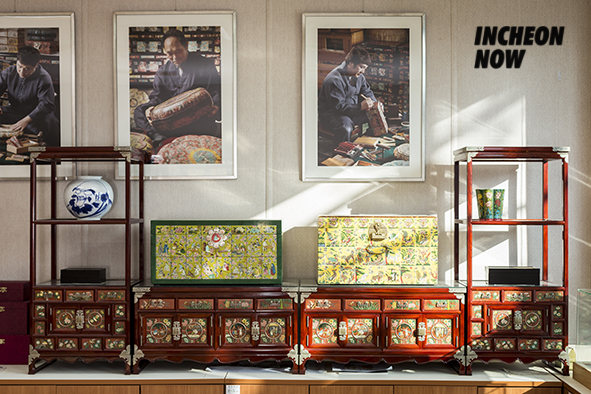
+ What is Ox Horn Inlaying?
Ox horn inlaying is a type of art accomplished by drawing on thinly processed ox horn and attaching it to ornaments and furniture. Until the introduction of glass crafts, the method of grinding the ox horn thinly was the best way to obtain the most transparent material, which is perfect for expressing the color of the painting. This has resulted in the development of ox horn inlaying, which used high quality ox horn into a thin and elaborate piece of work such as ornaments for women, furniture, and woodenware.
The professional with this skill was called Hwagakjang (ox horn inlaying master), who had to master five skills: excellent painting skills as the basic requirement, the technique of thinly processing the ox horn, the technique of making woodenware, the technique of lacquer, and the art of making ornaments. As ox horn inlaying is completed through such difficult and elaborate processes, it was a traditional high-end craft of Korea that was used only in the royal family since long ago.
However, the history of ox horn inlaying has not been known in detail. This is because the ox horn inlaying works are made of organic horns and easily decay, and they were mostly buried with the deceased and went on with the decaying process. This led to no excavation of related relics from the period before the 18th century. Still, however, with the discovery of several works from the 18th century and later, we could only assume that the history of ox horn inlaying started roughly around that period.
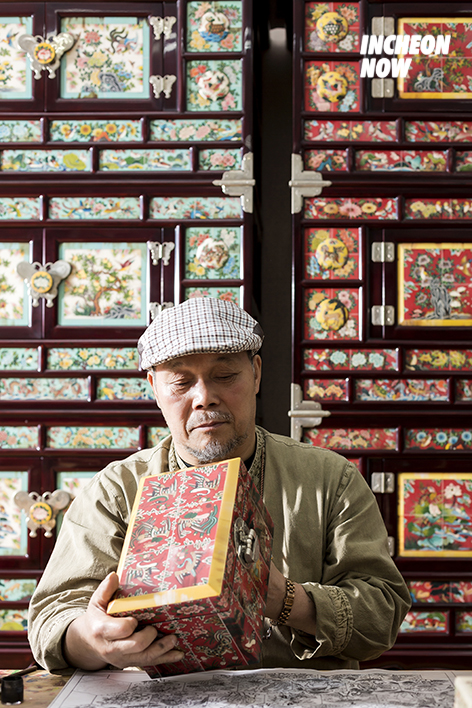
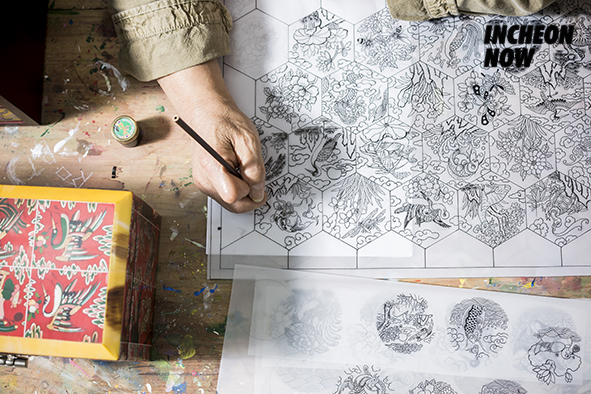
+ Maintaining the Soul of the Craft
The reason ox horn inlaying techniques could be handed down so far is that Mr. Jaeman Lee, who was trained under Ms. Ilcheon Eum, the preceding ox horn inlaying master, has been active as the holder of the National Intangible Cultural Heritage No. 109 Hwagakjang (ox horn inlaying). In fact, he is now the world's one and only authority as a master of ox horn inlaying. He started this art in 1964 and has been handling ox horns for 55 years.
After years of experience in this art, he has long been accustomed to his work, but he still works slow. This is because of his belief that there is no fast way in the art that creates beauty. This is a warning and reflection that reminds him of the days when he focused on production for a living rather than creation. The ox horn inlaying consists of a complete creation process from basic design to processing. You can’t let your hands do their job for being familiar with the process because it is the work of creating a unique work that would exist as a one-of-a-kind in the world each time you create one. The impatient young craftsman now became a mature artist with composure and elegance.
As he gained wisdom, his horizons became deeper and wider. He began to have concerns about the role of an artisan and how to preserve traditional Korean culture. As a result, he has been working on the restoration of artifacts for more than a decade. It started with the sense of responsibility for organizing what we have and to pass them on to the next generation, and it is about duplicating the old and faded artifacts and preserve them like new ones.
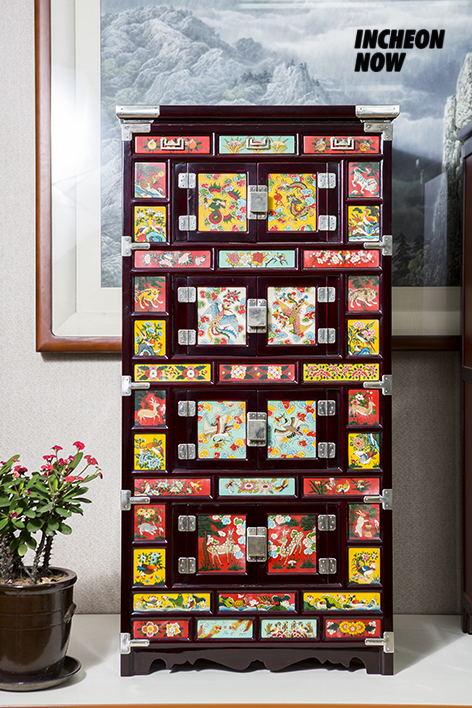
+ Efforts for the Future
He says the question ‘Who would leave today’s legacy to the future?’ suddenly came to his mind after restoring the works of preceding masters for about 10 years. At the same time, he also had a wish in his mind; he wanted to leave his footprints in history. It was a natural mission that the highest authority in ox horn inlaying of the times would have. As a result, Lee has currently been engaged in a new series of works to bridge the future with only ox horn crafts of modern times, which are more developed than the past. Because he can afford to concentrate on creation more deeply than ever, feeling at more ease, he says that he is now in his prime at a time in his life where he is losing physical strength.
Lee also teaches his two grown sons as the initiates of ox horn inlaying. They will be succeeding Lee later on. In addition, Lee is giving lessons and open demonstrations for the general public as often as he can. This is a part of his efforts to turn around the circumstance where nobody recognizes the ox horn inlaying and less people wish to learn. He continues to provide people with opportunities to experience the art so that they would develop even an inch of interest and it would not become a neglected culture of the past. He especially focuses on education for children by getting involved directly. Because when young children learn about the charm of ox horn inlaying at an early age, they might later become customers and propagators spreading this art in the future.
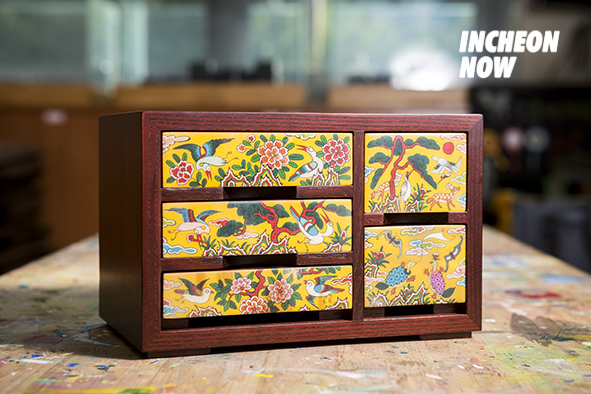
Guide to Incheon Intangible
Cultural Asset Learning Education Center
Location 599, Maesohol-ro, Michuhol-gu, Incheon
Operating Hours 09:00~18:00 / Closed on January 1, Lunar New Year’s Day and
Chuseok Holidays, Mondays
Admission Free
Contact 032-440-8080